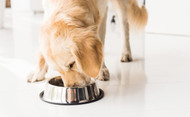Feeding Basics | Alaska Mill & Feed
Posted by Kimberly McCourtney on Dec 4th 2020
Finicky Eating. Sometimes it can be hard to get a dog to eat his complete and balanced dog food. This can be a problem, especially if it means your dog is not getting enough nutrition or is getting the wrong nutrition from somewhere else.
What Is Finicky Eating? As a rule, finicky eating is when a dog will only eat certain things. It is sometimes manifested in a dog who refuses to eat the complete and balanced dog food you offer or doesn't eat enough. Finicky eaters usually do so out of preference, but you should keep in mind that dogs might also refuse to eat because of a medical condition.
Also keep in mind environmental factors. Many pet owners comment that their dogs eat less during hot weather. This is not unusual. Studies show that, as a general rule, dogs need about 7.5 percent fewer calories with each 10 degree rise in temperature.
Change in Diet. One possible cause of finicky eating is a sudden change in diet. Some tips on making diet changes more tolerable:
- Before leaving the breeder, pet store, or Humane Society, find out what type, flavor, and brand of food your dog has been eating. Acquire some of this food.
- If the food your dog has been eating is acceptable to you, continue feeding it.
- If you want to switch your dog to a new food at any time, begin with a day or two of feeding the same food he had before.
- Then mix that food with your chosen brand or flavor for a few days, slowly decreasing the amount of old food and increasing the amount of new. This should take about a week or a little more.
- Do this any time you change foods or your dog may develop gastrointestinal upset.
Making Food More Palatable. If your dog doesn't like the new food, hang in there and try to make it more appealing.
- If you've chosen dry food, add a little water to moisten it.
- If you serve a moist food, warm it a little.
- Allow your dog time to adjust.
- If he still won't eat it, you may want to try a new food.
- If he won't eat that, have a talk with your veterinarian. You may be experiencing a complete refusal to eat.
- Mix a little wet with the dry to entice. Slowly decrease wet until he's back to only dry.

